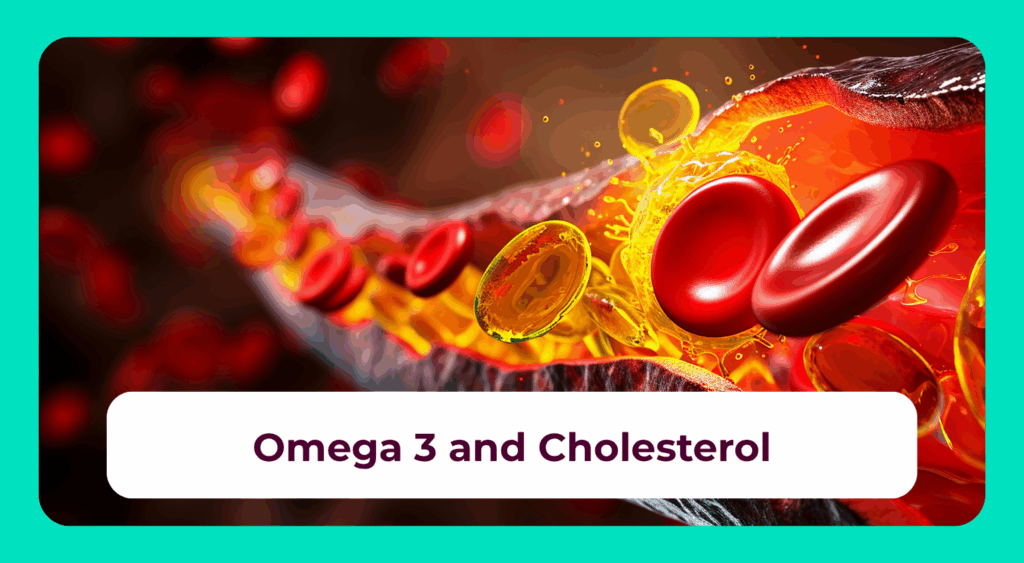Vitamin A at a glance
- The body can convert carotenoids, such as beta-carotene, into vitamin A.
- Vitamin A (retinol) is vital for vision, skin health, and a strong immune system.
- Adults generally need 700–850 µg of retinol daily, depending on age and gender.
- A deficiency can cause issues like vision problems and increased vulnerability to infections.
- Overdosing on vitamin A can be harmful, so supplements should only be taken when necessary.
What is vitamin A?
Vitamin A refers to a group of substances with similar effects, the most important being retinol. It also includes chemical compounds derived from retinol and carotenoids, like beta-carotene, which act as precursors (provitamins). Once consumed, vitamin A is converted into retinoic acid and retinal, enabling it to perform its roles in the body.
What does vitamin A?
Vitamin A serves many essential functions in the body, particularly in:
- Vision: It supports normal eyesight and is crucial for low-light vision by forming rhodopsin, a light-sensitive receptor in the eye.
- Skin and Mucous Membranes: It helps maintain healthy skin and mucous membranes.
- Immune System: It ensures proper immune system function.
- Cell Function: It is essential for cell growth and differentiation.
Additionally, beta-carotene (provitamin A) acts as a powerful antioxidant, protecting cells from damage caused by oxidative stress.
What Is the recommended daily intake of Vitamin A?
The daily requirement for vitamin A depends on age and gender. The German Nutrition Society (DGE) suggests these intake levels (in retinol activity equivalents, RAE):
- Infants (0–12 months): 400–500 µg
- Children (1–13 years): 300–600 µg
- Teen Boys (13–19 years): 800–950 µg
- Teen Girls (13–19 years): 700–800 µg
- Men (20–64 years): 850 µg
- Women (20–64 years): 700 µg
- Pregnant Women: 800 µg
- Breastfeeding Women: 1,300 µg1
What are retinol activity equivalents (RAE)?
The various substances summarized under the term vitamin A sometimes have very different conversion rates. 12 milligrams of beta-carotene, for example, correspond to about one milligram of retinol, depending on the efficiency of the conversion in the body. In order to be able to take these differences into account, the daily requirement is given in retinol activity equivalents.
Where is a lot of vitamin A contained?
Retinol, the active form of vitamin A, is mainly found in animal foods, such as liver, fish, and dairy products. However, there are also retinol-fortified plant foods. Liver has the highest vitamin A content . This is because vitamin A is stored in it. Other good sources of retinol include: Eggs and some dairy products.

Foods high in vitamin A (per 100 g)
- Pork liver: 39 mg
- Cod liver oil: 25.5 mg
- Beef liver: 18 mg
- Liver sausage: 8.3 mg
- Eel: 0.9 mg
- Tuna: 0.45 mg
- Whipped cream: 0.34 mg
- Edam cheese: 0.29 mg
- Eggs: 0.27 mg
- Gouda cheese: 0.26 mg
Do plant-based foods contain vitamin A?
Plant-based foods contain only provitamin A or carotenoids such as beta-carotene. Carrots and green leafy vegetables such as spinach and kale have a particularly high content of beta-carotene.
Can vegans get enough vitamin A from food?
In principle, it is also possible to ensure an adequate vitamin A supply with a vegan diet. In addition to the regular consumption of plant foods with a high content of carotenoids, it is necessary that neither fat digestion nor the conversion of provitamin A to vitamin A is impaired.2
What are the causes of vitamin A deficiency?
A vitamin A deficiency can be triggered, among other things, by a very unbalanced diet. In developing countries, this is quite common. In industrialized countries, on the other hand, nutrition-related deficiency symptoms are rare.
This is also shown, for example, by the National Consumption Study II, according to the results of which most adults in Germany consume more than enough vitamin A. Only 10 percent of women and 15 percent of men do not. 3
Disease-related causes of deficiency symptoms
If there is a deficiency in a country like Germany or Austria, it can usually be traced back to a health problem. For example, some diseases can impair the absorption or metabolism of the vitamin.
The disease-related triggers of a deficiency include, for example:
- chronic intestinal diseases such as Crohn’s disease,
- exocrine pancreatic insufficiency and
- Alcoholism.
How does a vitamin A deficiency manifest itself?
The body stores vitamin A mainly in the liver and in smaller quantities in the lungs and eyes, among other places. This body’s own storage can last up to a year in adults. Accordingly, it sometimes takes a long time before deficiency symptoms occur due to a lack of supply. A persistent deficiency can manifest itself with a variety of symptoms . It impairs, for example, normal vision, the function of the immune system and the skin.
Symptoms of vitamin A deficiency
Depending on the duration and severity, a lack of retinol can lead to the following symptoms, among others:
- Deteriorating vision at dusk to complete night blindness
- Thickening of the conjunctiva and cornea
- Complete blindness
- Increased susceptibility to infections
- Cornification of the skin
- Cornification of the mucous membranes in the respiratory tract as well as in the digestive and urinary tract
- Growth disorders in children
How can vitamin A deficiency be diagnosed and treated?
In addition to existing symptoms such as night blindness, measuring the vitamin A level in the blood can help with the diagnosis. However, the results of the blood test are only meaningful in the case of a severe deficiency.
A high-dose vitamin A preparation is used to treat an existing deficiency . Its dose is reduced after a few days. The intake must be continued until the deficiency symptoms subside.
Want to Explore the Future of Nutrition?
Discover how genetic testing can provide in-depth insights into vitamin and mineral needs. Partnering with Novogenia opens the door to offering advanced, personalised health recommendations based on genetics. As an expert in nutrigenetics, Novogenia equips businesses with the tools to elevate their health services.
By becoming a Novogenia partner, you’ll gain access to cutting-edge genetic analyses, enabling you to offer your customers highly customised health solutions. With Novogenia’s support, businesses can stand out in the growing field of personalised nutrition, building customer loyalty and expanding service offerings. Take the next step in transforming health services and unlocking the full potential of nutrigenetics.
What are the causes of an overdose?
As a rule, an excess can be traced back to taking it as a dietary supplement. A purely diet-related oversupply is practically impossible, unless you eat liver every day. Excess vitamin A is not simply excreted in the urine, but accumulates in the body. This makes chronic overdose or poisoning possible in addition to an acute one.
What are the consequences of vitamin A excess?
Just like too little, too much vitamin A can also be harmful to health. An acute excess can manifest itself with symptoms such as headaches, nausea and vomiting . If you regularly take in too much vitamin A, various other symptoms can also occur.
A chronic vitamin A overdose can have the following consequences, for example:
- Hair loss
- Brittle hair
- Dry skin
- Dry mucous membranes
- Lack of appetite
- Irritability
- Insomnia
- Decreased bone density
- Liver damage
Vitamin A overdose during pregnancy
When pregnant women take in too much vitamin A, it can not only harm their own health. The excess can also lead to malformations in your unborn baby. For this reason, it is important, especially during the first trimester, that pregnant women keep an eye on their intake of vitamin A and avoid foods such as liver.
What is the maximum daily dose?
EFSA, which is responsible for food safety in the EU , has set a maximum daily dose of 3,000 micrograms for vitamin A . Up to this amount, regular intake is considered safe for healthy adults. As with the daily requirement, the quantity refers to retinol activity equivalents.4
The German BFR (Federal Institute for Risk Assessment) recommends a maximum amount of 0.2 milligrams per daily dose for vitamin A-containing food supplements. In addition, it recommends that a note be noted on the preparations that pregnant women should only take them after consulting their doctor. 5
When should you take vitamin A?
Vitamin A supplements can help to meet an increased need or compensate for an existing deficiency. However, healthy people usually already get enough vitamin A from their diet. In this case, an additional dietary supplement does not bring any advantages and can even be harmful if the dosage is too high. Whether and in what dose a vitamin A preparation is useful should therefore always be decided individually.
- 1 German Nutrition Society: Recommended vitamin A intake (as of 2020). URL: https://www.dge.de/wissenschaft/referenzwerte/vitamin-a/ (last accessed on: 02.10.2024).
- 2 German Nutrition Society: Selected questions and answers on vitamin A (Publication: November 2020). URL: https://www.dge.de/gesunde-ernaehrung/faq/ausgewaehlte-fragen-und-antworten-zu-vitamin-a/ (last accessed on: 02.10.2024).
- 3 Max Rubner-Institut: Results Report, Part 2 National Consumption Study II (Publication: 2008). URL: https://www.mri.bund.de/fileadmin/MRI/Institute/EV/NVSII_Abschlussbericht_Teil_2.pdf (last accessed on: 02.10.2024).
- 4 European Food Safety Authority: Overview on Tolerable Upper Intake Levels as derived by the Scientific Committee on Food (SCF) and the EFSA Panel on Dietetic Products, Nutrition and Allergies (NDA) (Publication: June 2024). URL: https://www.efsa.europa.eu/sites/default/files/2024-05/ul-summary-report.pdf (last accessed on: 02.10.2024).
- 5 Federal Institute for Risk Assessment: Maximum level proposals for vitamin A in foods including food supplements (Publication: 2021). URL: https://www.bfr.bund.de/cm/343/hoechstmengenvorschlaege-fuer-vitamin-a-in-lebensmitteln-inklusive-nahrungsergaenzungsmitteln.pdf (last accessed on: 02.10.2024).
Important to know
If you are not a medical professional and have complaints, specific health conditions, or suspect deficiencies, please make sure to consult a doctor to discuss this.




